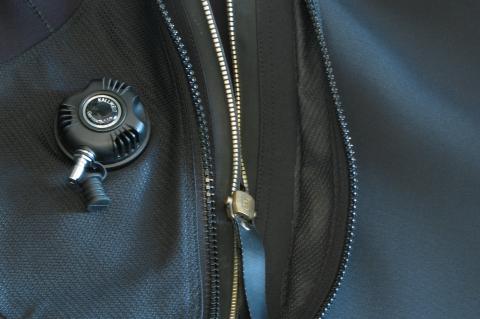X-Ray Mag #13
Travel: Bernardo Sambra and Jason Heller takes us on an adventure to amazing Galapagos, while Barb Roy guides around Vancouver Island. Drysuits! Dressing up right for fall diving: 13 packed spreads with (almost) everything you ever wanted to know about drysuit diving. And to cater for the after-diving, a Dive Fall Fashion section. There are some very cool watches too. As for side dishes we got plenty of News about people, training issues, Whales & Dolphins, Sharks and Turtles, New Books and oh... Did you know why Water is Blue? Also in the science section: Medicines from the Ocean. Cedric Vedier takes us down on a WW2 Japanese Battleship and as t he eye candy in the end some amazing paintings by Carlos Hiller
Main features in this issue include:
Carlos Hiller - painter of ocean light
The art of Carlos Hiller is devoted to the ocean. His paintings bring powerful images brimming with energy and marine life into our daily lives. Huge schools of fish and diverse marine creatures are usually present on his paintings which evoke the mysterious atmosphere of the underwater world. Some works are split images, giving us views above and below the surface of the water at the same time in one painting.
“When I am diving or just snorkelling, all I have in mind is the marine environment, the light travelling to the deepness, my breathing. I only care about the life surrounding me, the exploration, and the colours…”
— Carlos Hiller
Coloured Water
No! I am not talking about American beer but about ordinary clean water, water that should come out of your tap. From the air, shallow coastal sea-waters above white sands often appear to be blue or green, most of this colouring being due to either reflection from the sky or from organic growths such as chlorophyll containing algae.
This colour arises from very weak absorptions at the yellow-red end of the electromagnetic spectrum. The visible part of this spectrum stretches from the UV region, starting at a wavelength of about 380 nm, to the start of the infra-red region, at about 770 nm.
Diving the hot spots of Vancouver Island
My dive buddy and I enter the cool clear water and descend down a mooring line to the deck of the 110-meter (366-ft) wreck Saskatchewan. The water is 8°C (47°F). I look up to see the rest of the group silhouetted in a light emerald hue arrive like slow motion skydivers.
Upon the railings and deck resides an outline of white plumose anemones, all varying in height. Small swimming scallops, curious juvenile rockfish, brittle stars, decorator crabs and colourful nudibranchs seem to occupy the rest of the deck structures.
Drysuits
All the questions about drysuits you always wanted to know the answer to but never dared to ask: Why dive drysuits? Neoprene or membrane type? Purchasing a suit. Zippers and care. Getting the Bouyancy right. Diving the suits. Special training and tips.
Not that I mind diving in wetsuits, which I often have to do whenever I go traveling with a limited luggage allowance, and I gladly admit that diving in wetsuits does tend to give you a more real experience of being in the wet element, whereas a drysuit does tend to isolate you, which, by the way, also has its advantages. Some would even say that this is the very point of using drysuits.
Japanese Battleship
Nowadays, the name Yamashiro could have different meanings depending on where you come from. If you live in Los Angeles, a huge pagoda near Hollywood is the oldest structure in California and hosts a famous restaurant named Yamashiro or “Mountain palace” in Japanese. If you live in Kyoto, Japan, Yamashiro is the name of an area close-by.
October 24th, 1944
Ralph Hagen
Ralph Hagen can remember the actual moment he started cartooning as if it were yesterday. Hagen says that he was about four when he saw a cartoon pencil sketch hanging on his grandfather’s porch drawn by a second cousin of his, who eventually grew up to become a commercial artist. The drawing was a rendering of Alfred E. Neuman of MAD Magazine, exclaiming, “What, me worry? “
The young Hagen would cut open paper grocery bags for drawing paper and draw until there wasn’t an inch of space left. In first grade, Hagen would turn over the handouts and draw before he had done the school work on the other side.
The Oceanic Cornucopia
For millennia, mankind has been obtaining nourishment from the oceans, not only from fish and shellfish but also from the various types of plant life. The oceans are also home to some of the most pois








